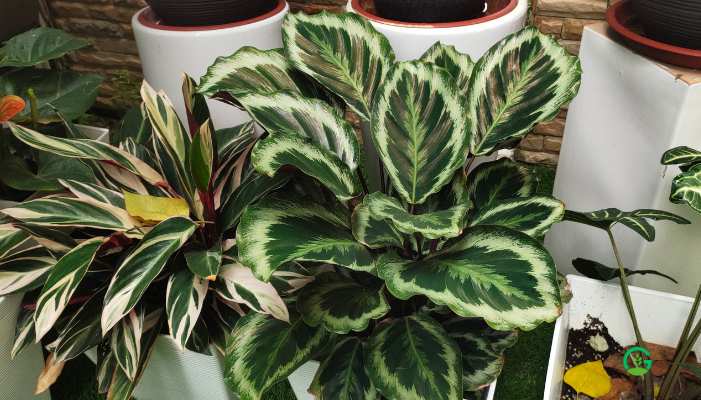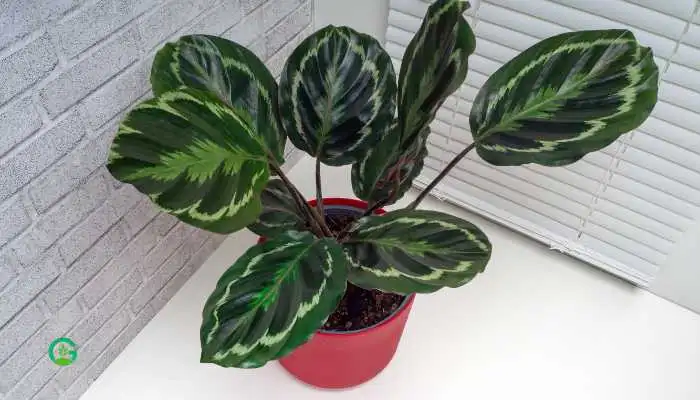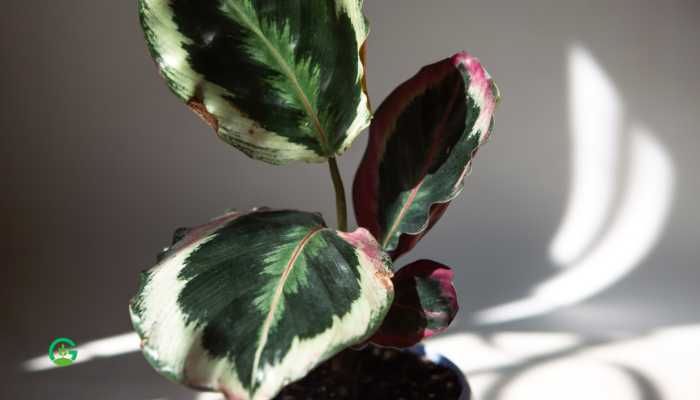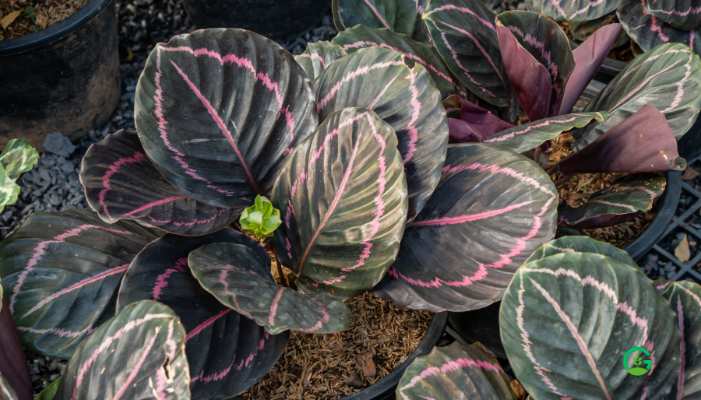Introduction
Are you looking to add a splash of colour and a touch of the exotic to your home? Look no further than the rose painted calathea.
This stunning Indoor plant, known for its vibrant and unique foliage, can transform any space into a tropical paradise. In this guide, we’ll explore everything you need to know about caring for and enjoying this beautiful plant.
Rose Painted Calathea Table of Contents
What is a Rose Painted Calathea?
The rose painted calathea (Calathea roseopicta) is a tropical plant native to South America. It’s celebrated for its eye-catching leaves, which feature a striking pattern of dark green, light green, and pink hues. These plants belong to the Marantaceae family, often referred to as prayer plants due to their unique habit of folding their leaves at night.
The Origins of Rose Painted Calathea
The rose painted calathea hails from the lush rainforests of Brazil. In its natural habitat, this plant thrives in the warm, humid understory, shaded by taller trees. Its vibrant foliage serves as a natural camouflage, blending seamlessly with the dappled light and shadows of the rainforest floor.

Key Features and Characteristics
Vibrant Foliage
One of the most captivating aspects of the rose painted calathea is its foliage. The leaves are large, oval-shaped, and feature a beautiful mosaic of colors. The top of the leaf is dark green with light green stripes and a central pinkish-purple pattern, while the underside is a deep, rich burgundy.
Unique Leaf Movement
Like other calatheas, the rose painted calathea exhibits nyctinasty, a behavior where the leaves move in response to light. During the day, the leaves spread out to maximize light absorption, and at night, they fold up as if in prayer.
Ideal Growing Conditions
Temperature and Humidity
To mimic the tropical conditions of its native habitat, the rose painted calathea prefers temperatures between 65-80°F (18-27°C) and high humidity levels. It’s important to keep the plant away from cold drafts and sudden temperature changes.
Watering and Humidity Requirements
Rose painted calatheas thrive in consistently moist soil. However, it’s crucial to avoid waterlogging, which can lead to root rot. Water the plant when the top inch of soil feels dry. To maintain high humidity, consider using a humidifier, misting the leaves regularly, or placing the plant on a pebble tray with water.
Soil and Fertilization Needs
These plants prefer well-draining, peat-based potting soil. A good mix might include equal parts peat moss, perlite, and potting soil. Fertilize your rose painted calathea every 4-6 weeks during the growing season (spring and summer) with a balanced, water-soluble fertilizer diluted to half strength.
Light Requirements
Rose painted calatheas thrive in bright, indirect light. Direct sunlight can scorch the leaves, causing them to lose their vibrant colors. If natural light is insufficient, consider using grow lights to provide the necessary illumination.

Common Pests and Diseases
Pests
Like many houseplants, the rose painted calathea can be susceptible to pests such as spider mites, aphids, and mealybugs. Regularly inspect your plant for signs of infestation and treat it promptly with insecticidal soap or neem oil.
Diseases
Overwatering and poor drainage can lead to root rot, a common issue for rose painted calatheas. Ensure your plant’s pot has proper drainage and avoid letting it sit in standing water. Fungal leaf spots can also occur in high-humidity environments. Increase air circulation around the plant and remove any affected leaves.
Propagation Methods
Division
The easiest way to propagate a rose painted calathea is by division. During the plant’s growing season, carefully separate a section of the plant with its own root system and replant it in a separate pot. Ensure the new plant receives the same care as the parent plant to thrive.
Stem Cuttings
While less common, rose painted calatheas can also be propagated through stem cuttings. Cut a healthy stem with at least one node and place it in water or moist soil until roots develop.

Tips for Healthy Growth
- Maintain consistent watering: Keep the soil evenly moist, but avoid waterlogging.
- Provide high humidity: Use a humidifier or mist the leaves regularly.
- Use well-draining soil: Ensure good drainage to prevent root rot.
- Avoid direct sunlight: Place the plant in bright, indirect light.
Decorating with Rose Painted Calathea
The rose painted calathea makes a stunning addition to any indoor space. Its vibrant leaves can brighten up a dull corner, serve as a focal point in a plant display, or complement other tropical plants. Consider placing it in a decorative pot that highlights its unique foliage.
Troubleshooting Common Problems
Yellowing Leaves
Yellowing leaves can indicate overwatering, underwatering, or low humidity. Adjust your watering schedule and increase humidity to resolve this issue.
Brown Leaf Edges
Brown leaf edges are often a sign of low humidity or too much direct sunlight. Move the plant to a more suitable location and increase humidity levels.
Leaf Curling
Leaf curling can result from underwatering or exposure to cold drafts. Ensure the plant receives consistent moisture and is kept in a warm, stable environment.
Image | Product Name | Review | Price |
Benefits of Rose Painted Calathea
Beyond its aesthetic appeal, the rose painted calathea offers several benefits. It can improve indoor air quality by filtering out pollutants and adding humidity to the air. Its presence can also contribute to a sense of well-being and relaxation, making it a perfect addition to your home or office.
Read More
Conclusion
The rose painted calathea is a truly unique and beautiful houseplant that can bring a touch of the tropics into your home. By providing the right care and conditions, you can enjoy its vibrant foliage and distinctive leaf movements for years to come. Whether you’re a seasoned plant enthusiast or a beginner, the rose painted calathea is sure to captivate and delight.
Frequently Asked Questions (FAQs)
How often should I water my rose painted calathea?
Water your rose painted calathea when the top inch of soil feels dry. Ensure the soil is consistently moist but not waterlogged.
Can rose painted calathea tolerate low light conditions?
While rose painted calathea prefers bright, indirect light, it can tolerate low light conditions. However, its growth may slow, and the colors may become less vibrant.
How can I increase humidity for my rose painted calathea?
Increase humidity by using a humidifier, misting the leaves regularly, or placing the plant on a pebble tray with water.
What should I do if my rose painted calathea has brown leaf edges?
Brown leaf edges often indicate low humidity or too much direct sunlight. Move the plant to a more suitable location and increase humidity levels.
How can I propagate my rose painted calathea?
Propagate your rose painted calathea through division or stem cuttings. Division is the easiest method, involving separating a section of the plant with its own root system and replanting it.




















